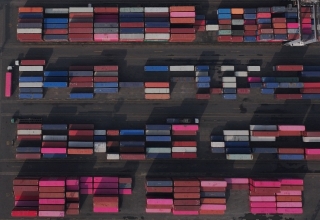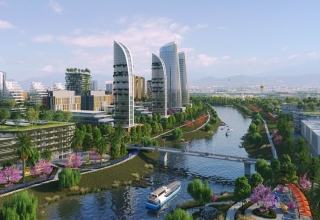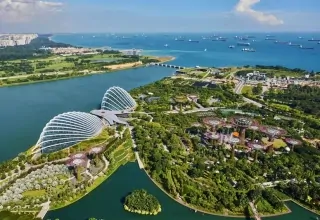
The ASEAN Power Grid (APG) idea is not really new as it has been circulating during the last 20 or more years, but now it is supposed that the time has come to really contemplate how this activity could be made less carbon-intensive. Professor Woo Wing Thye of the Sustainable Development Solution Network at the UN thinks that ASEAN needs to grant ASEAN Centre for Energy (ACE) the power to carry out this important study.
Professor Woo told a recent energy conference that “when it has already conducted such a study, the country will be able to make decisions, between various lesser or greater means of attaining decarbonization.” The ASEAN Centre for Energy is considered to be the think tank on energy in the region to assist the South East Asian nations to make more prudent decisions involving energy.
At present, a majority of ASEAN countries aim to achieve net zero in 2050. Indonesia is targeting to realize this aim in 2065, whereas Thailand is considering working towards shifting to the year 2050. Such climate targets signify the great significance of ASEAN power grid decarbonization.
Abdul Razib Dawood, the executive director of ACE, noted that it is the duty of the organization to strike a breakthrough on the APG this year. Nevertheless, ACE should obtain formal approval by the ASEAN leaders to finalise the scenario planning on decarbonizing power grids.
Benefits of Regional Power Grid Integration
John Thwaites of the Monash Sustainable Development Institute finds massive possibilities in linking up the power systems in Southeast Asia. Interconnection implies that when there is an excess of power, then it may be moved to the place where there is a deficit of power, he added.
Various benefits of this ASEAN power grid integration are as follows:
- Energy Security: Nations get to share electricity; so when one country is experiencing shortages, the entire region becomes more energy secure.
- Cost Savings: Collaborative efforts on decarbonization of ASEAN power grid would be significantly more cost-effective than the attempt conducted individually by each country. Those countries having an abundance of renewable energy would be able to generate clean power at a cheaper price and trade it with their neighbors.
- Climate Goals: The collaboration between the regions will facilitate the whole region of Southeast Asia in achieving their climate goals as outlined in the Paris Climate Agreement.
The perfect example of regional integration significance is provided by Singapore. As pointed out by Professor Woo, generating green energy will be very expensive in Singapore compared to that of nearby Malaysia because Singapore does not have much space to build a solar plant.
Economic Opportunities Through Clean Energy Cooperation
Although decarbonizing power grids in ASEAN may be considered as an environmental project, Lisa Sachs of Columbia Center on Sustainable Development thinks it is more than that. She is of the view that it has the potential of being “a competitive industrial strategy of the region that may end up being incredibly large.”
The integrated low-carbon grid would help support:
- Industrial centres of development
- Low carbon transport corridors
- Manufacture of battery in electric vehicles
- Production of clean energy parts
But it is not going to be a cheap exercise to create this connected system. Financial analysts predict that it will cost not least a hundred billion dollars to create transmission lines of the ASEAN Power Grid.
It has already made some way forward. The electricity cross-border trading does work as it has been observed by the Lao PDR- Thailand- Malaysia- Singapore Power Integration Project, which is transporting clean hydropower to Singapore.
Professor Woo made it clear that physical linkages alone cannot bring success. Southeast Asian countries have to come up with regional agreements to enable them to be able to trade electricity in each other across borders easily.























